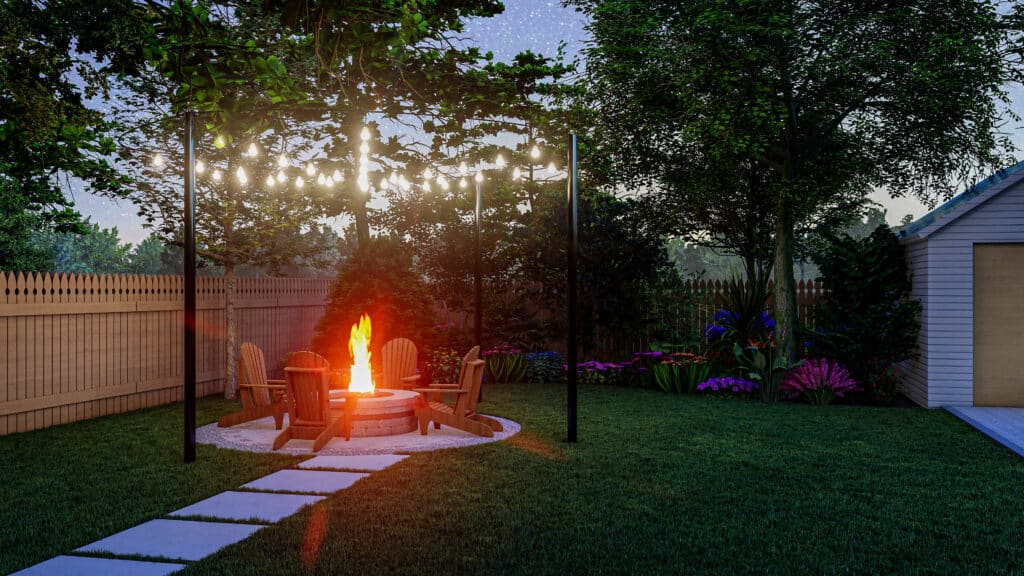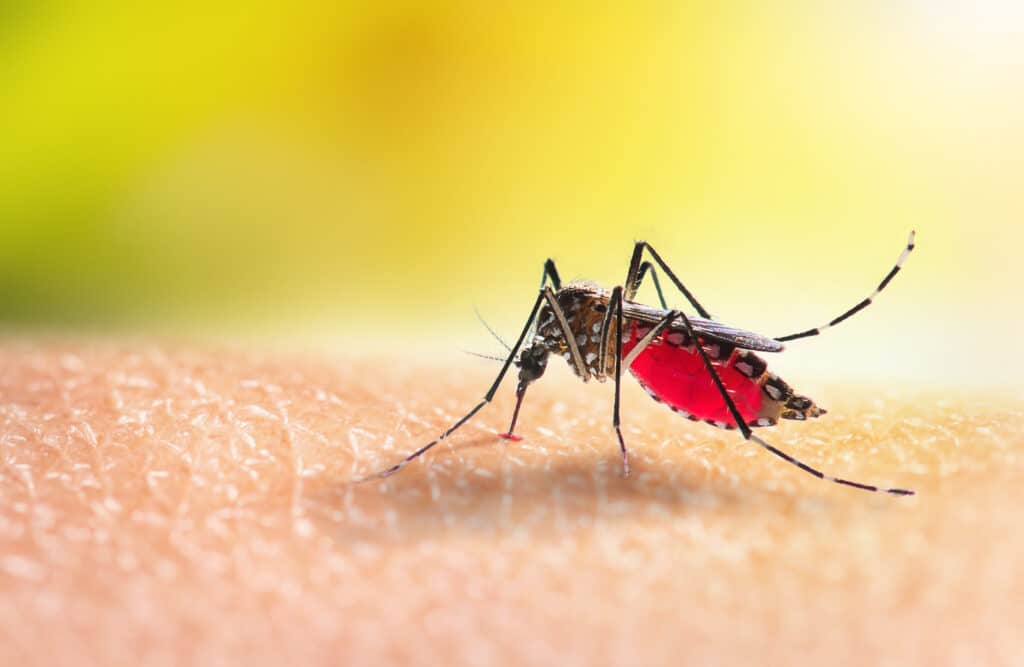
As the summer season commences, bringing with it longer days, warm nights, and an abundance of outdoor activities, it’s imperative to prepare for the unwanted presence of a seasonal nuisance: mosquitoes. These pesky insects not only cause annoying bites and itches but also carry diseases that can pose significant health risks.
To ensure an enjoyable and mosquito-free summer, a comprehensive five-point strategy can be adopted: firstly, the effective use of personal and environmental repellents; secondly, meticulous elimination of potential mosquito breeding sites; thirdly, installing physical barriers such as screens and mosquito nets; fourthly, wearing appropriate clothing to minimize skin exposure; and finally, integrating natural deterrents such as mosquito-repelling plants and certain lighting options into your landscape.
These multi-pronged preventative measures provide an all-round defense, creating an environment where you, your family, and guests can relish the summer while keeping mosquitoes at bay.

Skin-Based Repellents
The first line of defense often involves skin-based repellents. Products containing active ingredients such as DEET, picaridin, IR3535, or oil of lemon eucalyptus have been found to be highly effective. DEET-based repellents, despite being on the market for decades, continue to be a go-to option due to their reliable performance. Picaridin and IR3535 are synthetic options that are odorless and non-greasy, which some individuals may find more comfortable for regular use. Oil of lemon eucalyptus provides a naturally derived alternative, appealing particularly to those who prefer plant-based products. However, care must be taken to use these products as per the manufacturer’s instructions. They should not be applied on broken skin or around eyes and mouth. For children, there are specific guidelines based on their age which need to be strictly adhered to for safe use.
For broader protection, especially in larger indoor and outdoor spaces, repellent devices such as vaporizer devices and mosquito coils can be extremely effective. These devices slowly release mosquito-repelling vapors that form a protective shield against these pests. However, they should be used in well-ventilated areas and kept out of reach of children and pets.
A mention must be made of plant-based repellents. Certain plants, like citronella, lemongrass, and basil, emit scents that mosquitoes find unappealing. Using essential oils from these plants or having these plants in your garden or patio can help deter mosquitoes naturally. While their efficacy might not match up to their synthetic counterparts, they provide an eco-friendly option for those prioritizing natural methods.
While using repellents forms an integral part of keeping mosquitoes at bay, it’s essential to follow the guidelines for safe use. Be aware of potential allergies, particularly when using skin-based repellents, and always opt for products approved by trusted health authorities. A carefully thought-out, comprehensive repellent strategy can go a long way in ensuring your summer remains undisturbed by the buzz and bite of mosquitoes.
Breeding Suckers
Mosquitoes are not just bothersome insects; they are also quite resourceful breeders. Given their lifecycle, standing water serves as the perfect breeding ground, enabling them to multiply rapidly and in large numbers. This is why a second crucial strategy in mosquito control involves vigilant identification and elimination of potential mosquito breeding sites around your home and community.
Mosquitoes require water to lay their eggs and for their larvae to develop. In fact, the complete lifecycle from egg to adult can occur in as little as a week and entirely within a small pool of stagnant water. Any container that can hold water for a few days, be it natural or man-made, has the potential to become a mosquito breeding ground. This includes bird baths, pet dishes, flower pot saucers, rain barrels, gutters, tires, buckets, pool covers, and even small items like discarded cans or bottle caps.
To prevent your home and garden from becoming a mosquito nursery, it’s important to regularly inspect these areas for standing water. After a rainfall, make it a habit to empty, change, or remove water in potential breeding sites. For bird baths and pet dishes, it’s advisable to change the water at least once every two days. For larger containers like rain barrels or buckets that can’t be emptied regularly, mosquito dunks, which are biological control agents that kill mosquito larvae, can be used.
Gutters and drainage systems often become inadvertent mosquito breeding spots due to leaf litter and debris that can block water flow. Regular cleaning and maintenance of these systems are therefore essential. For swimming pools, it’s important to keep the water properly chlorinated and the pool covered when not in use.
In community spaces, efforts should be made to clean shared areas and dispose of litter correctly. Community members should be encouraged to participate in regular clean-up drives and to be vigilant about potential breeding sites. Reporting of larger bodies of stagnant water to local health or mosquito control authorities can also help in larger scale mosquito control efforts.
Landscaping can also play a part in this strategy. Use of gravel or sand in garden areas can facilitate better water drainage and help prevent puddles from forming. Similarly, plants that require less watering or those that absorb large quantities of water can be chosen for mosquito-prone areas.
The control of mosquito breeding sites is an ongoing, proactive process that requires regular attention and timely action. This might seem like a mundane task, but remember, for every potential breeding site you eliminate, you’re significantly reducing the number of mosquitoes that could otherwise emerge and potentially spoil your summer enjoyment.
Physical Barriers
As an integral part of your mosquito prevention strategy, the installation of physical barriers such as screens and mosquito nets provides a solid defense against these pesky intruders. While repellents and breeding site control address the issue at the individual and environmental levels respectively, physical barriers serve to protect the sanctity of your home and personal spaces, significantly reducing your exposure to mosquitoes.
Window and door screens are the first line of defense against mosquitoes entering your home. These screens, made of metal, plastic, or fabric mesh, should be fine enough to prevent mosquitoes from passing through, yet still allow air circulation. It’s important to choose good quality, durable material for your screens as they will be subjected to the elements. Screens should fit well, without gaps or tears. Regular checks and prompt repairs will ensure their effectiveness. Importantly, it’s not just windows and doors that need screening. Other openings, like ventilation vents or gaps around air conditioning units, can also provide entry points for mosquitoes and should therefore be screened as well.
Mosquito nets, meanwhile, serve a more localized purpose. They are particularly beneficial for protecting sleeping areas, where humans are stationary for extended periods, making them easy targets for night-active mosquitoes. Treated with insecticides such as permethrin, these nets not only block physical entry but also kill mosquitoes that come into contact with them. This dual protective action makes them especially useful in areas with high mosquito populations or where mosquito-borne diseases are prevalent.
In addition to their use over beds, mosquito nets can also be used to create mosquito-free zones in outdoor spaces such as patios, decks, or gazebos. Larger nets can encompass entire seating areas, providing an insect-free environment where you can enjoy outdoor activities without the constant annoyance of buzzing and biting.

Personal Protection
Personal protection forms a critical component of our anti-mosquito arsenal. When it comes to shielding ourselves from these blood-sucking pests, our choice of clothing plays a surprisingly significant role. By understanding and exploiting mosquitoes’ preferences and behaviors, we can dress ourselves in a way that minimizes our appeal to these insects, reducing the likelihood of being bitten.
Firstly, the color of our clothes can influence how attractive we are to mosquitoes. Studies have shown that these insects are more drawn to dark colors, possibly because they mimic natural mosquito habitats like dark, shady vegetation. Therefore, wearing light-colored clothing can make you less noticeable to mosquitoes.
Secondly, the amount of skin exposed can have a direct impact on the number of mosquito bites we receive. Wearing long-sleeved shirts and long pants drastically reduces the area of skin that mosquitoes can target. While this might not always be the most comfortable option in the heat of summer, the advent of breathable, lightweight fabrics makes this a more practical solution than it might initially seem.
The texture and thickness of the fabric also matter. Tightly woven fabrics are harder for mosquitoes to penetrate, offering better protection than loose weaves. Some outdoor and travel clothing lines offer garments specially designed with mosquito protection in mind, incorporating tight weaves and even repellent-infused fabrics for an extra layer of protection.
For those in heavily mosquito-infested areas or engaging in activities like camping or hiking, more aggressive personal protection measures may be warranted. This can include wearing mosquito nets designed to be worn over hats or caps. These nets provide a physical barrier that mosquitoes cannot cross, protecting the face and neck – areas particularly vulnerable to bites.
Remember, personal protection doesn’t replace the need for other preventive measures like repellents and environmental controls. Instead, it complements these strategies, adding another layer of defense against mosquitoes. So as you gear up for the summer, consider your wardrobe as part of your anti-mosquito strategy – it’s an easy and effective way to help keep yourself bite-free.
The integration of natural deterrents into your surroundings is a green and harmonious strategy that contributes significantly to your holistic mosquito control plan. It combines the pleasant aesthetics of certain plants and specific lighting options that deter mosquitoes, creating a comfortable and inviting environment for humans but not for these pesky insects.
Starting with plants, numerous flora are reputed for their mosquito-repelling properties. These plants emit scents that, while pleasant or neutral to humans, are disliked by mosquitoes, making them an effective, natural way to deter these pests. Citronella is perhaps the most commonly known mosquito-repelling plant, widely used in candles, torches, and insect repellents. However, it’s important to note that the plant itself is more effective when the leaves are crushed to release the aroma.
Lemongrass, which contains citronella, is another good choice, as is basil, a culinary herb that doubles as a mosquito repellent. Marigolds, with their distinctive smell, can also deter mosquitoes and other pests. These plants can be placed strategically around outdoor seating areas, patios, and windows to form a living barrier against mosquitoes.
Lighting
Lighting is another aspect to consider. Mosquitoes are attracted to conventional incandescent lights, which can unfortunately make your outdoor spaces more inviting to them. Replacing these with yellow ‘bug lights’ or LED lights, to which mosquitoes are less attracted, can help reduce their presence. These lights emit a spectrum of light that’s less visible to insects, thus drawing fewer mosquitoes. Solar-powered options are also available, offering an energy-efficient solution.
However, it’s essential to remember that while these natural deterrents can contribute to reducing mosquito presence, they are unlikely to eliminate it completely. They should therefore be considered as part of a broader, multifaceted approach to mosquito control.
Integrating natural deterrents into your environment is a beneficial and ecologically friendly part of a comprehensive mosquito control strategy. Whether you’re potting mosquito-repelling plants or installing low-attractant lighting, these methods not only enhance the ambiance of your outdoor spaces but also help to keep those pesky mosquitoes at bay.
RECAP
Keeping mosquitoes at bay, particularly during the balmy summer months, requires a multifaceted and proactive approach. By implementing these five key strategies, you can significantly reduce the risk of mosquito bites, ensuring you can enjoy the warmer weather without the constant annoyance of these pesky pests.
The use of repellents, both on skin and in your surroundings, forms the first line of defense. From DEET-based products to plant-based alternatives, there is a range of options to suit every individual need. Likewise, wearing permethrin-treated clothing and using repellent devices can further enhance your protection.
The second strategy involves a vigilant identification and elimination of potential mosquito breeding sites. Regularly checking and draining any standing water around your home can curb the growth of mosquito populations at the source.
Installing physical barriers such as screens and mosquito nets creates a tangible obstacle for mosquitoes, keeping them out of your personal and living spaces. This is complemented by personal protection measures, including wearing light-colored and tightly woven clothing, which reduce your appeal to mosquitoes and limit their access to your skin.
Lastly, the integration of natural deterrents like mosquito-repelling plants and specific lighting options provides an environmentally friendly layer to your overall strategy. They contribute to creating an outdoor space that’s inviting for humans but not for mosquitoes.
Each strategy on its own offers a level of protection, but their real strength lies in their combined use. Mosquito control requires a comprehensive approach, and by incorporating these strategies into your routine, you can keep these unwelcome guests at bay, ensuring that your summer is defined not by the itch of mosquito bites, but by the pleasure of warm, carefree days and nights.
Cheers to Backyard Memories!
Liza
